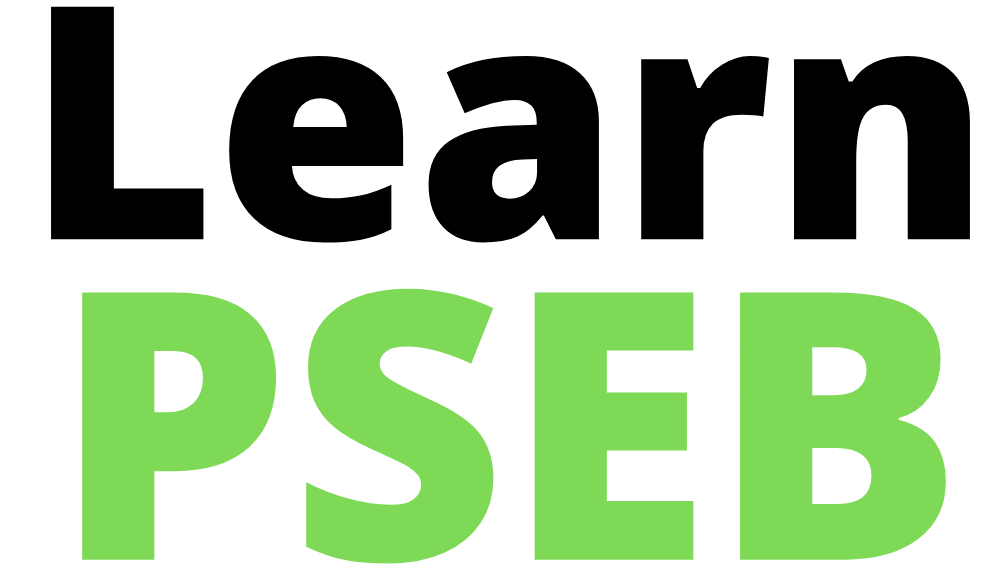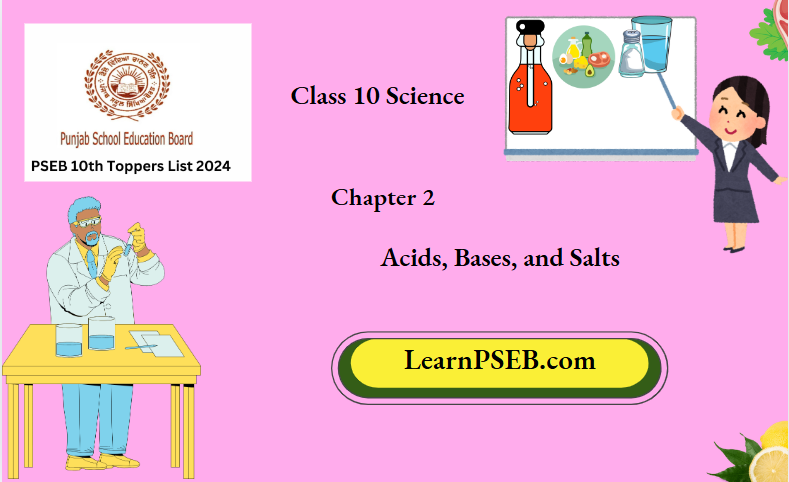PSEB 10th Class Science Solutions: Chapter 2 – Acids, Bases, and Salts
In the PSEB 10th Class Science curriculum, Acids, Bases, and Salts is crucial for understanding the properties and reactions of these substances. This article provides previous year questions and answers to help students prepare effectively for their exams.
PSEB 10th Class Science Solutions Chapter 2
PSEB 10th Class Science Chapter 2 Key Concepts in Acids, Bases, and Salts
Before diving into the questions, let’s briefly summarize the essential concepts:
- Acids: Substances that release hydrogen ions (H⁺) in aqueous solutions. Common examples include hydrochloric acid (HCl) and sulfuric acid (H₂SO₄).
- Bases: Substances that release hydroxide ions (OH⁻) in solution. Sodium hydroxide (NaOH) is a typical base.
- Salts: Formed when an acid reacts with a base, resulting in a neutralization reaction.
Acids, Bases, and Salts PSEB 10th Class Notes
Read And Learn More 10th Class Science Solutions
PSEB 10th Class Science Chapter 2 Previous Year Questions and Answers
Question 1: What is the pH of a neutral solution?
Answer: The pH of a neutral solution is 7. This indicates that the concentration of hydrogen ions (H⁺) is equal to that of hydroxide ions (OH⁻).
Question 2: Why do HCl and HNO₃ show acidic behavior in aqueous solutions while glucose does not?
Answer: HCl and HNO₃ dissociate in water to release H⁺ ions, which are responsible for acidity. In contrast, glucose does not dissociate to release H⁺ ions in solution; hence, it does not exhibit acidic behavior.
Question 3: Describe the reaction between an acid and a metal carbonate.
Answer: When an acid reacts with a metal carbonate, it produces a salt, water, and carbon dioxide gas. For example:
Question 4: What happens when an acid reacts with a base?
Answer: The reaction between an acid and a base is called neutralization. It produces salt and water. For example:
Question 5: How can you identify an acidic solution using litmus paper?
Answer: An acidic solution turns blue litmus paper red. If you have red litmus paper, it will remain red in an acidic solution.
PSEB 10th Class Science Important Questions Chapter 2
PSEB 10th Class Science Study Tips for Chapter 2
- Understand Key Definitions: Familiarize yourself with definitions of acids, bases, and salts.
- Practice Reactions: Write out the chemical equations for reactions involving acids and bases.
- Use Visual Aids: Diagrams that illustrate pH scales or reaction processes can enhance understanding.
- Solve Previous Year Papers: Regularly practice with past exam questions to improve your problem-solving skills.
PSEB 10th Class Chemistry Chapter 2 Solutions
PSEB 10th Class Science Solutions For Chapter 2 Conclusion
Mastering Chapter 2 on Acids, Bases, and Salts is essential for success in the PSEB 10th Class Science exam. By reviewing previous year questions and their answers, students can solidify their understanding of key concepts and enhance their exam preparation strategies.

